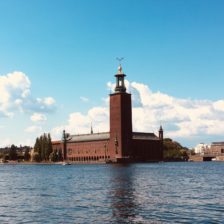
Alley – Old Town Stockholm
Gamla Stan, the Old Town, is one of the largest and best preserved medieval city centers in Europe, and one of the foremost attractions in Stockholm. This is where Stockholm was founded in 1252.
All of Gamla Stan and the adjacent island of Riddarholmen are like a living pedestrian-friendly museum full of sights, attractions, restaurants, cafés, bars, and places to shop. Gamla Stan is also popular with aficionados of handicrafts, curious, and souvenirs. The narrow winding cobblestone streets, with their buildings in so many different shades of gold, give Gamla Stan its unique character. Even now cellar vaults and frescoes from the Middle Ages can be found behind the visible facades, and on snowy winter days, the district feels like something from a storybook.
There are several beautiful churches and museums in Gamla Stan, including Sweden’s national cathedral Stockholm Cathedral and the Nobel Prize Museum. The largest of the attractions in the district is the Royal Palace, one of the largest palaces in the world with over 600 rooms. In addition to the reception rooms, there are several interesting museums in the Palace, including the Royal Armory, with royal costumes and armor. Don’t miss the parade of soldiers and the daily changing of the guard.
Västerlånggatan and Österlånggatan are the district’s main streets. The city wall that once surrounded the city ran inside these streets along what is now Prästgatan. In the middle of Gamla Stan is Stortorget, the oldest square in Stockholm. Stortorget is the central point from which runs Köpmangatan, the oldest street in Stockholm, which was mentioned as early as the fourteenth century. Mårten Trotzigs gränd (Mårten Trotzigs alley) is hard to find. It’s the narrowest alley in Gamla Stan, only 90 centimeters wide at its narrowest point. Make sure not to miss Riddarholmen and the Riddarholmen Church. The church is a royal burial church and was built as a Franciscan monastery for the so-called Grey Brother monks in the thirteenth century.

Follow Us!